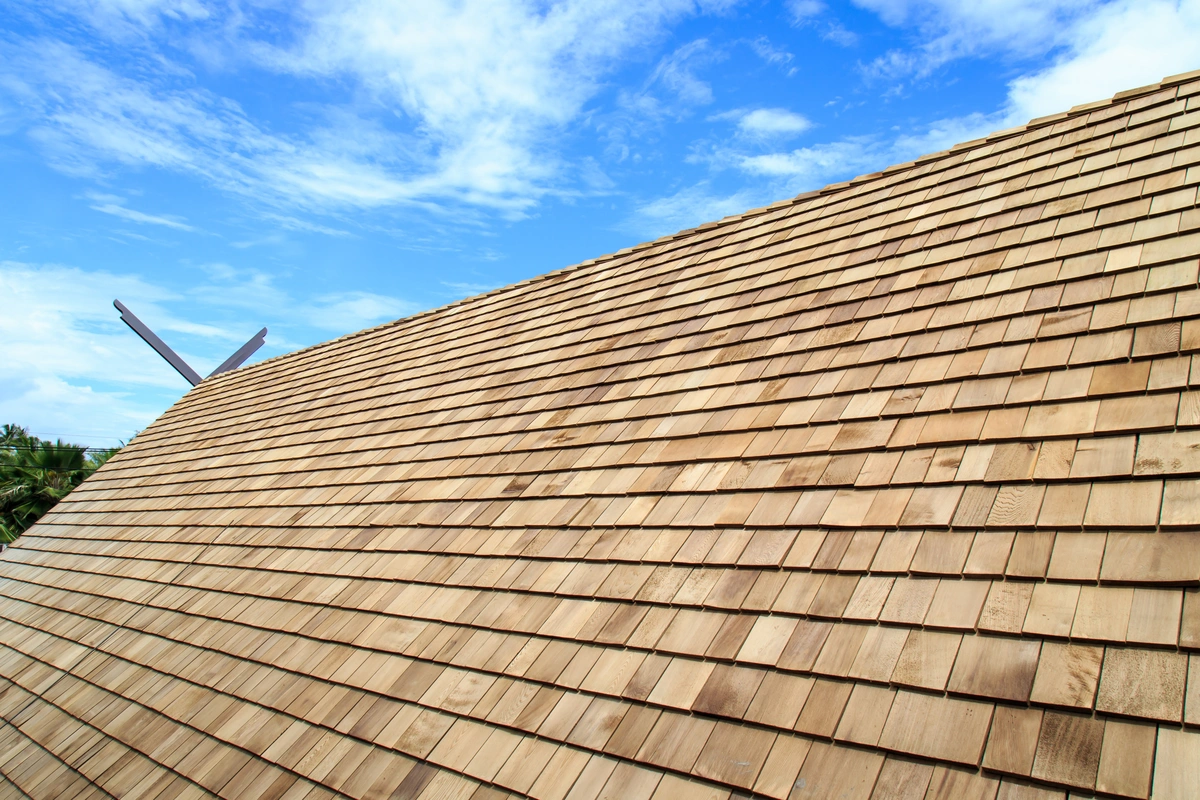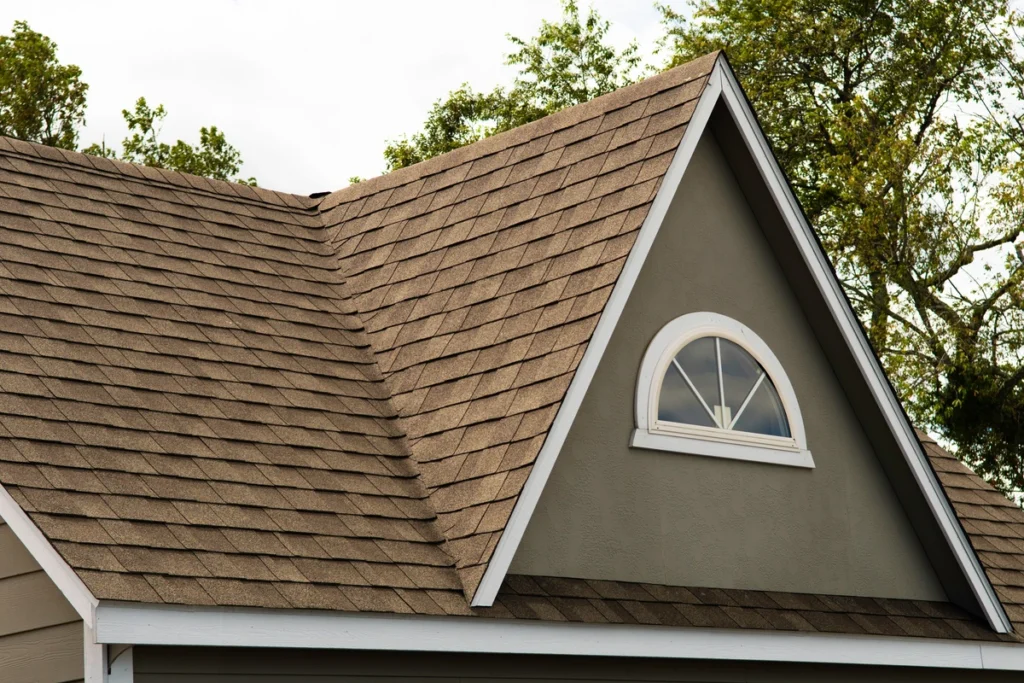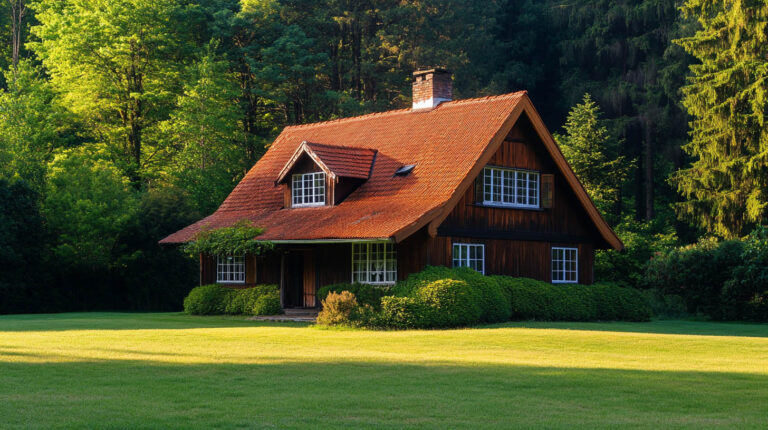
Blog
5 Roof Types to Consider for Your Home
Your roof is more than just a protective layer over your head; it’s a crucial component of your home’s structure, providing:
- Safety
- Security
- Insulation
When it comes to replacing your roof or selecting a roof type for a new construction, there are numerous factors to consider, from materials and style to cost and maintenance.
In this guide, we’ll explore everything you need to know about roof types, signs indicating it’s time for a replacement, the benefits of a roof replacement, how to choose the right style, average costs, and essential maintenance tips for your new roof.
Signs That It’s Time to Replace Your Roof
A roof replacement is a huge undertaking. Make sure it’s the right step for you by keeping an eye our for these signs:
- Age: Most roofs have a lifespan of 20-30 years depending on the materials used. If your roof is nearing or past this age, it’s time to consider a replacement.
- Visible Damage: Look for signs of wear and tear such as cracked, curled, or missing shingles, as well as rusted or corroded flashing.
- Leaks: Water stains on your ceiling or walls, as well as mold or mildew growth, indicate potential roof leaks.
- Sagging: A sagging roofline may indicate structural issues, requiring immediate attention.
- Granule Loss: Excessive granule loss from asphalt shingles can compromise the integrity of your roof.
- High Energy Bills: Poor insulation due to a deteriorating roof can lead to increased energy costs.
Benefits of a Roof Replacement
A roof replacement may feel like a burdensome task, but there are lots of benefits to installing a new roof. Here are just a few:
- Enhanced Curb Appeal: A new roof can significantly improve the aesthetic appeal of your home, increasing its value.
- Increased Property Value: A well-maintained roof adds value to your property and can make it more attractive to potential buyers.
- Improved Energy Efficiency: Newer roofing materials offer better insulation, reducing energy consumption and costs.
- Enhanced Protection: A new roof provides better protection against weather elements, preventing leaks and water damage.
- Peace of Mind: Knowing that your home is secure under a sturdy, reliable roof can give you peace of mind for years to come.
5 Different Roof Types

Once you’ve decided to install a new roof, choosing roofing materials is the next step. We’ve compiled a list of the most popular roof types for residential buildings.
1) Asphalt Shingles:
Asphalt shingles are the most common roofing material, consisting of a fiberglass or organic base topped with asphalt and mineral granules.
✅ Pros:
- Affordability
- Easy installation and repair
- Variety of colors and styles
❌ Cons:
- Shorter lifespan compared to other materials (15-30 years)
- Susceptible to algae and mold growth
- Less eco-friendly than some alternatives
2) Metal Roofing:
Metal roofs are made from aluminum, steel, or copper sheets, offering durability and longevity.
✅ Pros:
- Long lifespan (50+ years)
- Excellent durability against weather elements
- Energy-efficient and recyclable
❌ Cons:
- Higher upfront cost
- Prone to denting from heavy hail or falling branches
- Expansion and contraction can cause noise during temperature fluctuations
3) Wood Shingles/Shakes:
Wood shingles or shakes are made from cedar, pine, or redwood, providing a natural and rustic look.
✅ Pros:
- Aesthetic appeal
- Excellent insulation properties
- Environmentally friendly
❌ Cons:
- Higher maintenance requirements, including regular sealing and treatments
- Vulnerable to rot, mold, and insect damage
- Fire hazard in some areas
4) Slate Roofing:
Slate roofs are crafted from natural stone, offering unmatched beauty and durability.
✅ Pros:
- Long lifespan (100+ years)
- Fireproof and resistant to mold, rot, and insects
- Low maintenance
❌ Cons:
- High initial cost
- Heavy weight requires structural reinforcement
- Limited color options and availability
5) Clay or Concrete Tiles:
Clay or concrete tiles are popular in Mediterranean or Spanish-style architecture, providing a distinctive look.
✅ Pros:
- Long lifespan (50+ years)
- Fireproof and resistant to pests and rot
- Low maintenance and excellent insulation
❌ Cons:
- Heavyweight requires a reinforced roof structure
- Higher installation costs
- Fragile and prone to breakage if walked on
Different Roofing Styles
Along with roofing materials, there are different roofing styles to choose from, including:
Gable Roof:
A gable roof is characterized by two sloping sides that meet at a ridge, forming a triangular shape.
- Pros:
- Simple design with excellent water runoff
- Offers attic space for storage or living areas
- Versatile and suits various architectural styles
- Cons:
- Prone to wind damage in hurricanes or high winds
- Limited attic space in steeply pitched designs
- Requires proper ventilation to prevent moisture buildup
Hip Roof:
A hip roof has slopes on all four sides, meeting at a ridge with no vertical ends.
- Pros:
- Offers better stability and wind resistance than gable roofs
- Provides ample attic space with less risk of leaks
- Ideal for areas prone to high winds or hurricanes
- Cons:
- More complex design may result in higher construction costs
- Limited ventilation options compared to gable roofs
- Requires regular maintenance to prevent debris buildup in valleys
Flat Roof:
A flat roof has little to no slope, creating a horizontal surface.
- Pros:
- Offers additional outdoor living or recreational space
- Ideal for modern and minimalist architectural styles
- Allows for easy installation of solar panels or green roofs
- Cons:
- Prone to water pooling and leaks without proper drainage
- Requires regular maintenance to prevent deterioration and ponding
- Limited insulation and ventilation options compared to sloped roofs
Mansard Roof:
A mansard roof features a double slope on all four sides, with the lower slope steeper than the upper slope.
- Pros:
- Provides extra living space or attic space with its steep slopes
- Adds architectural interest and curb appeal to the home
- Allows for flexibility in adding dormer windows or extensions
- Cons:
- Requires skilled craftsmanship for proper installation
- Higher construction costs compared to simpler roof styles
- Limited attic ventilation and insulation options
How to Choose the Right Style for You

There are a lot of factors to consider, when it comes to a roof replacement. Feeling overwhelmed? We get it. Streamline your decision making process, by thinking of the following:
- Consider Your Home’s Architecture: Choose a roof style that complements the overall design and aesthetic of your home.
- Assess Functional Needs: Consider factors such as climate, weather conditions, and available space when selecting a roof style.
- Budget: Determine your budget and prioritize features and design elements that fit within your financial constraints.
- Consult with a Professional: Work with an experienced roofing contractor or architect to explore different styles and their suitability for your home.
- Visualize the Final Look: Use design tools or consult with professionals to visualize how different roof styles will look on your home before making a final decision.
Your Professional Guide to Different Types of Roof Systems
Selecting the perfect roof for your home involves considering not only the materials but also the style and design elements that best suit your needs, preferences, and budget. By understanding the various roof types and styles available, along with their pros, cons, and considerations, you can make an informed decision that enhances the beauty, functionality, and value of your home.
Got questions? Contact Avenue Roofing today to learn more!



